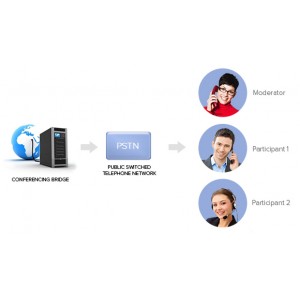Kategori
- SOLUTIONS
- OMNI CONTACT CENTER
- HOSTED | CLOUD PBX
- SIP TRUNKING
- SOLUSI HEMAT TELEPON
- IP PBX AND APPLIANCES
- IP PHONE
- CORDLESS IP PHONE
- WIFI IP PHONE
- VIDEO IP PHONE
- GIGABIT IP PHONE
- VIDEO CONFERENCE
- CONFERENCE CAMERA
- INTERACTIVE BOARD
- CONFERENCE PHONE
- CONFERENCE SYSTEM
- HEADSET
- VOIP GATEWAY
- ISDN E1 GW | CONVERT
- GSM GATEWAY
- IP INTERCOM
- IP PAGING
- NETWORK SWITCH
- WI-TEK
- Unmanaged PoE Switch
- Unmanaged ETH Switch
- Managed PoE Switch
- Reverse PoE Switch
- Passive PoE Switch
- No-Break PoE Switch
- Auto-Sense PoE Switch
- Cloud Mesh AP
- Cloud Mesh WiFi 6 Router
- Cloud L2 Managed PoE Switch
- Cloud L2 Managed Fiber Aggregation Switch
- Cloud Platform
- Mobile Cloud APP
- Cloud Mesh WiFi 6 Router
- Cloud L2 Managed PoE Switch
- Cloud L2 Managed Fiber Aggregation Switch
- Cloud Easy Smart Managed PoE Switch
- 4G LTE Outdoor CPE
- 4G LTE Indoor Wi-Fi Router
- UPS No-Break Solar PoE Switch
- Smart IoT Box
- Smart PoE Tech for WISP
- Outdoor Waterproof PoE Switch
- PoE Switch for CCTV
- Hi-PoE Long-Range PoE Switch for CCTV
- Fiber PoE Switch
- Full Gigabit PoE Switch
- SNMP Managed Gigabit PoE Switch
- Gigabit Ethernet Switch
- 2.5G/10G SWITCH
- Easy Smart Ethernet Switch
- Easy Smart PoE Switch
- Hardened PoE Switch
- Industrial Cloud Switch
- Superic Industrial Switch
- Mixed Industrial PoE Switch
- Boost Voltage Industrial PoE Switch
- 90W PoE Switch/PoE Injector/PoE Splitter
- Waterproof Industrial PoE Extender/PoE Inejctor/PoE Splitter
- PoE Injector,Splitter and Extender
- Gigabit SFP Fiber module
- Wireless Long-Range Transmit for CCTV IP Camera
- Fiber Optical Transceiver
- Indoor and Outdoor Cloud AP
- Cloud AP Controller/Enterprise Load Balance Gateway
- 3-10KM Long-Range Outdoor CPE for WISP
- 10-30KM Long-Range Outdoor CPE for WISP
- 24V Reverse PoE Switch
- SNMP Managed Gigabit Reverse PoE Switch
- Fiber Ethernet Switch
- SNMP Managed Gigabit Ethernet Switch
- GPON ONU PoE Switch
- HIMAX
- PROCET
- INDUSTRIAL POE Switch
- POE SWITCH
- GIGABIT ETH Switch
- OUTDOOR POE SWITCH
- HRUI
- WI-TEK
- WIRELESS AP
- CCTV | SURVEILLANCE
- SERVERS
- FIBER OPTIC & 3 PLAY
- ROUTER
- IP CAMERA
- SERVICES
- PA SYSTEM

PT. DIVATEL PRATAMA
Menara Kuningan 6th Floor,
Jl. H.R. Rasuna Said Blok X-7 Kav.5,
Jakarta Selatan 12940
Telp.: 021-30022778 (Hunting)
0852 8940 4589 (Mobile/WA)
Email: [email protected]
 User Online
User Online
Today Accessed: 3032
Total Accessed: 466535
Your IP: 216.73.216.111, 216.73.216.111
How to Convince Your Boss to Upgrade Your Legacy Phone System
written by at 2020-07-26
It’s time. You know that legacy phone system is becoming obsolete and switching to VoIP is the best move: There’s little shortage of benefits, and it makes sense from both administrative and business standpoint. That said, how do you persuade your boss to make the jump?
Upgrading a phone system is no small feat. And sometimes, your boss simply doesn’t realize how legacy phone systems are holding business back. To convince the upper management of the essential phone transformation, your job is positioned to present the case tangibly while providing essential evidence of overall return on investment (ROI) – including the problems it could solve, the additional business advantages it could bring, and the potential savings in the long run.
Here are several power-packed arguments to help you get started.
1. Issues with Your Current Legacy Phone System
There are a number of factors that can cause a legacy telephone system, or a traditional TMD PBX system, to fail when you need it most. Try to remind your boss of your current issues. They may include the customers’ complaints on the ability to reach employees, the difficulty of adding phone lines, complex system administration, escalating phone bills and maintenance costs, disaster-vulnerability, etc. Below are several key points to bring up.
Legacy PBX is marking company growth cost-prohibitive
Legacy phone systems, often referred to as analog or TDM PBX systems, rely on hardware and physical phone lines to carry your voice traffic. The means: if you need to add new phone lines or cover more users, the costs can be fairly expensive because there are new hardware and copper wiring to settle.
In contrast, IP PBX systems can be scaled up and down effortlessly and cost-effectively to meet your business growth. Whether with an on-premises or cloud-based system, new phone lines (SIP Trunks) and users can be added over the Internet at anytime without any wiring work and any installation fees. All it takes is to make a few point-and-click changes in your administrative portal, or to call your service provider for an additional PBX extension/line package. In effect, upgrading to an IP-based telephony solution like Yeastar will allow your business to grow and expand phone system capacity at anytime in a much simpler way, and most importantly, without breaking the bank.
Legacy PBX falls short of demanding mobility and integration capacity
A physical desk phone that sits in the office won’t help an employee who is offsite for the day. Businesses are now in demand of a highly mobile and integrated communications system to accommodate the growing on-the-go workers and efficient data processing. Unfortunately, legacy phone systems aren’t capable of such capacity. Your employees should always “stay in place” to not to miss a call. And unified communications is simply not allowed for the legacy PBX’s outdated IT infrastructure.
A VoIP PBX phone system could change the things, however. For example, with the IP-based Yeastar PBX system, your employees may move throughout the office with mobile device and laptops to collaborate, or work remotely: all voice telephony features alongside the advanced UC capacity like IM, presence, and file sharing are always at their fingertip. Besides, business-critical applications like CRM, Hotel PMS, Call Center can also be integrated to auto-process mass data, bringing your business efficiency and productivity to the next level.
Legacy phone systems bring escalating phone bill and maintenance costs
Legacy phone systems don’t require frequent update, but making changes to meet your businesses’ needs can cost you an arm and a leg. With a legacy PBX, you may be required to purchase additional hardware for advanced features. And whenever a problem occurs, you’re often asked to pay for on-site tech support from vendor. There is little remote tech support option and things can’t get fixed on time, which may cause unexpected business with system downtime.
In addition to the maintenance costs, phone bills with a legacy phone system are also substantial. Your calls are transmitted via antique PSTN lines that charge at a much higher rate than VoIP, especially for long-distance and international calls. After all, the telecom carrier needs to invest in wires, cables, and satellites to support your phone lines.
2. Additional Business-enhancing Benefits with the New VoIP PBX
The key step to gain upper management support is to prove the upgrading is a right move. Listing the advantages that your legacy PBX isn’t capable of is most straightforward. Based on your complete network and infrastructure assessment, present your proposed solutions and state your case as to why it’s the best option. Here are several common VoIP advantages to help dissipate your boss’s concerns.
- Unified, integrated communications: having the ability to embrace multiple collaboration and communication features in one platform. Bring the company together with advanced features like mobile softphone, conferencing, messaging, presence, etc. And fuel your sales and support process with robust CRM integration that enables quicker access to customer data.
- Simpler system management: an IP-PBX system will be much more familiar to computer-savvy people. This can be especially true for Asterisk-based systems that have a front-end GUI such as Yeastar. The adds, changes and moves can be done in a web-based administrative portal in minutes.
- Remote extensions and softphone: employees can plug in a compatible IP phone at home to their Internet connection and be extension dialing. Coordinated mobile softphone also allows your road warriors to have their business extensions always with them.
- Branch offices: a best-in-class IP-based phone system allows for the creation of bridges among office locations over IP phone lines or internet connection. If you’re having a cloud-based phone system, IP phone will be the major cost of the hardware needed for a new office location.
- Eliminate phone wiring: connect hardware IP phones directly to a standard computer network port which it can share with an adjacent computer. Software phones can be installed directly on the PC. By eliminating phone wiring, adding or moving extensions is much easier, and new offices can completely eliminate the need for wiring extra ports.
- Fast migration to VoIP: finish your whole system migration to VoIP in less than one day. Most VoIP PBX systems now arrive plug-and-play ready and are easy to configure with easy-to-understand buttons/drop-down on the Web GUI. The advanced IP Phone auto-provisioning can also help to deploy multiple handsets in bulk.
3. The Potential Savings of Upgrading to VoIP
The best way to appeal to upper management is to focus on the cost-effectiveness of the new solution. But don’t just say, “It’s cheaper!”. Provide concrete figures that spell out how much you’ll save with a VoIP system when convincing your boss. Do a side-by-side comparison of your current phone system spend, including the cost of individual features.
VoIP reduces operating expenses enough to pay for itself in the near term. And it can save the company a whole lot of money going forward. Here are several statistics to help you prove the point:
- A business that adopts VoIP technology can expect to see between 50% and 75% cost reduction. And businesses with 30 users using a new VoIP system save around $1,200 per month. (Harbor Network)
- Small businesses that switch to VoIP reduce their local call costs by up to 40%, and international call costs by up to 90%. (TechCo)
- Businesses can save up to 75% on communication if they opt for VoIP. (BullsEye Telecom, 2017)
4. The Best Practice: Show, Don’t Tell
It’s said that a picture is worth a thousand words. If the points and facts above alone don’t convince your boss. Let him/her see it in action. Set up a time for everyone to hop on a webinar or join a demo that showcases VoIP phone systems. Yeastar offers 30-day full-access free trial to Yeastar VoIP PBX system, so you can experience how VoIP and unified communications could make a change to your business at no risk. You can also prepare some case studies to show your boss your solution in real case.
If there are any blockers in your path to convince your boss, let us help. Contact us here and we’ll see if we can help your team decide to join the thousands of business enjoying the cost-savings, ease and flexibility of VoIP technology.
Comments
 021-30022778
021-30022778
![]() SALES & MARKETING :
SALES & MARKETING :
Indra Ilham - Ext. 111
John - Ext. 110
DIVATEL - 0851-7306-0800
Ismed S. - 0852-8940-4589
Dipa A. - 0821-1063-2366
Indra Ilham - 0818-188-818-59
John - 0812-1070-3999
![]() INTERACTIVE DISPLAY :
INTERACTIVE DISPLAY :
Dharma - 0878-7753-7902
Carlo - 0878-8796-8114
![]() EMAIL :
EMAIL :
Keranjang Belanja
Diskon
-

Escene ES290N
Rp 750.000 Rp 725.000
Produk baru
Dinstar UC200 Pro - IP PBX
- UC200 Pro is a powerful and reliable IP PBX designed to meet the...
Lebih lanjut Distributor Dinstar C60U-W IP Phone WiFi Murah Berkualitas Promo 2025
- Distributor Dinstar C60U-W IP Phone WiFi Murah Berkualitas Promo 2025...
Lebih lanjut Milesight MS-C5321-FPE — AI Multi-Sensor Multi-Directional Camera 4×5MP
- Dapatkan pengawasan 360° menyeluruh dengan Milesight MS-C5321-FPE,...
Lebih lanjut















































































Leave a comment